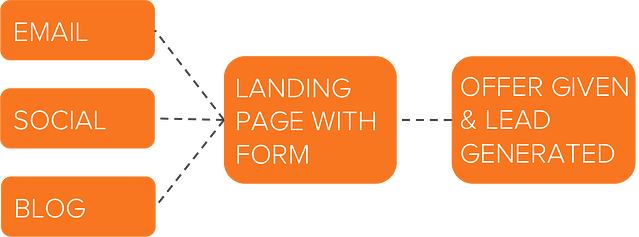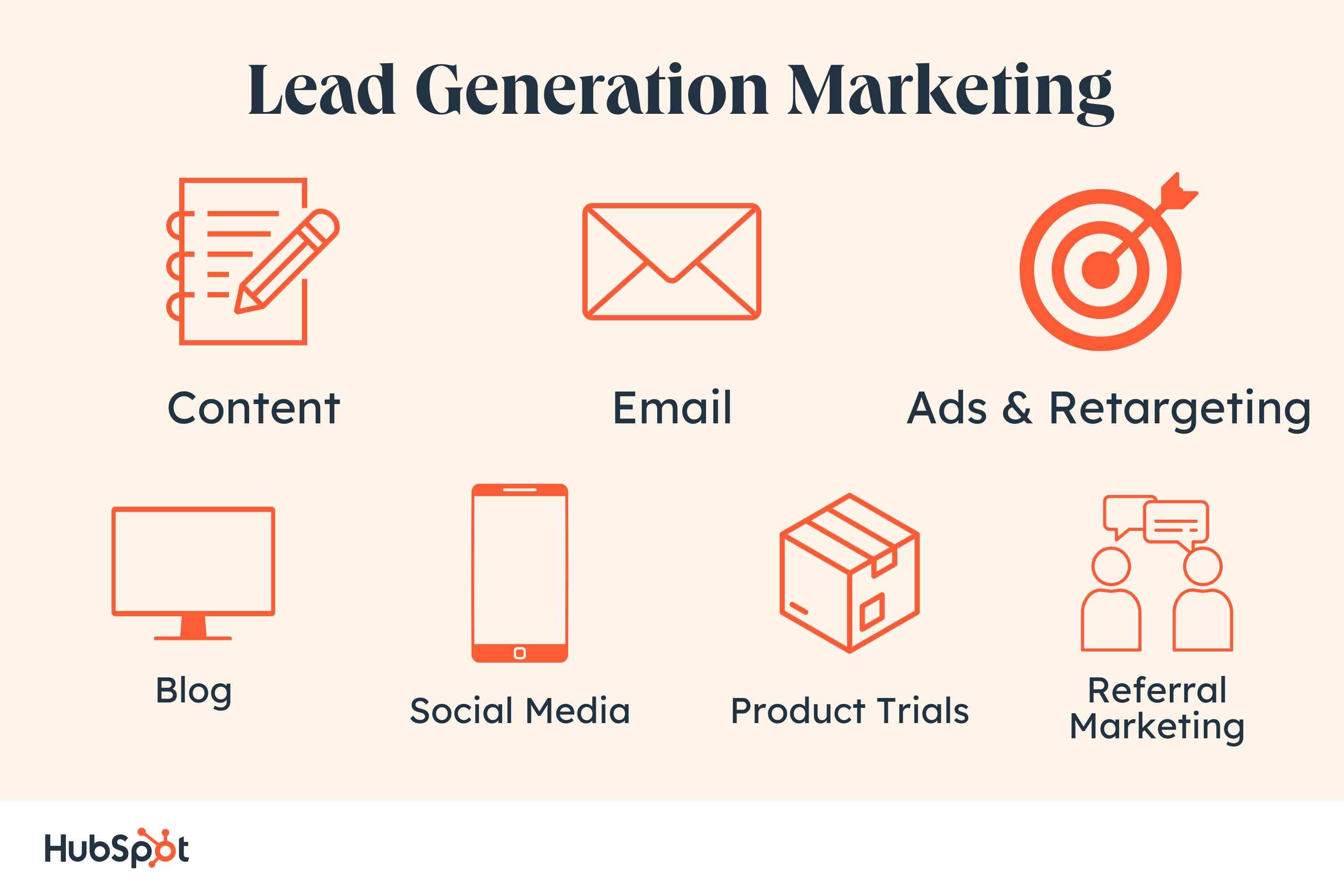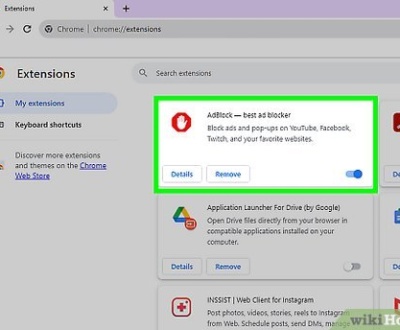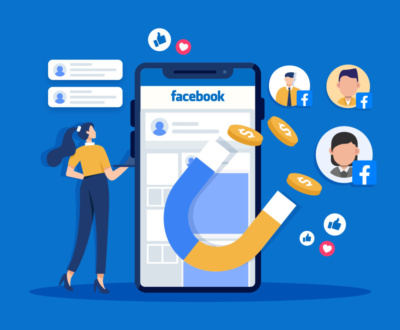Proven Strategies for Generating Leads
- January 16, 2023
- Digital Marketing, Inbound Sales, Lead Generation, Outbound Sales, Sales
What is Lead Generation?
Generating Leads is the process of attracting prospects and potential customers to your business and increasing their interest through nurturing, all with the end goal of converting them into a happy customer. Some ways to generate potential leads are through job applications, blog posts, coupons, live events, and online valuable content.
Why do you need Lead Generation?
When a stranger initiates a relationship with you by showing an organic search interest in your business, the transition from a stranger to a customer is much more natural.
Lead generation in the sales funnel falls within the second stage of the inbound marketing methodology. It occurs after you’ve attracted an audience and are ready to convert those visitors into leads for your sales team. Increasing the conversion rate at every stage of the process will lead to more visitors, leads, and then current customers.
As you can see in the diagram below, generating leads is a fundamental point in an individual customer’s journey to becoming a delighted customer.
As you can see in the diagram below, generating leads is a fundamental point in a customer journey to becoming a delighted customer.

Lead Generation Process
Now that we understand how lead generation fits into the inbound marketing methodology, let’s walk through the steps of the inbound lead generation process and generating a steady stream of paying clients.
- First, a visitor discovers your business through one of your inbound marketing channels, such as your website, blog, or social media channels.
- That visitor then clicks on your call-to-action (CTA) an image, button, or message that encourages website visitors to take some sort of action.
- That CTA takes your visitor to a landing page, which is a web page that is designed to capture lead information in your CRM (customer relationship management tool) in exchange for an offer. An offer is content or something of value that’s being “offered” on the landing page. This can be an ebook, a course, or a template.
- Once on the landing page, your visitor fills out a form in exchange for the offer.
See how everything fits together?
To sum it up: Visitor clicks a CTA that takes them to a landing page where they fill out a form to get an offer, at which point they become a lead.
Lead Generation Marketing
Once you put all of these elements together, you can use your various promotional channels to drive traffic to your landing page to start generating potential leads.
But what promotional channels should you use to promote your landing page? Let’s talk about the front end of lead generation, and lead gen marketing.
If you’re a visual learner, this chart shows the flow from promotional marketing channels to a generated lead.

There are even more online marketing channels you can use to get visitors to become potential leads. Let’s go into depth on these and talk about a few others.
Content Marketing
Content is a great way to guide users to a landing page. Typically, you create content to provide visitors with useful, free information. You can include CTAs anywhere in your content inline, bottom-of-post, in the hero, or even on the side panel.
The more delighted a visitor is with your content, the more likely they are to click your call-to-action and move onto your landing page.
Email campaigns are a great place to reach the people who already know your brand and product or service. It’s much easier to ask them to take an action since they’ve previously subscribed to your email list.
Cold emails tend to be a bit cluttered, so use CTAs that have a compelling copy and an eye-catching design to grab your subscriber’s attention.
Check out our Cold Emailing 101 Guide Here
Ads and Retargeting
The sole purpose of an ad is to get people to take an action. Otherwise, why spend the money?
If you want people to convert, be sure that your landing page and offer match exactly what is promised in the ad, and that the action you want users to take is crystal clear.
Blog
The great thing about using your blog posts to promote an offer is that you can tailor the entire piece to the end goal.
So, if your offer is an instructional video on setting up Google Search Console, then you can write a blog post about how to select your B2B marketing metrics … which would make your CTA highly relevant and easy to click.
Social Media Marketing
Social media platforms make it easy to guide your followers to take action, from the swipe up option on Instagram stories to Facebook bio links to bitly URLs on Twitter.
Product Trials
You can break down a lot of barriers to a sale by offering trials of your product or service. Once a prospect is using your product, you can entice them with additional offers or resources to encourage them to buy.
Another best practice is to include your branding in your free versions so you can capture other potential customers, too.
Referral Marketing
Referral another lead generation tool, or word-of-mouth, marketing is useful for lead generation in a different way. That is, it gets your brand in front of more people, which, in turn, increases your chances of generating more inbound leads.
Whatever channel you use to generate B2B leads, you’ll want to guide users to your landing page. As long as you’ve built a landing page that converts, the rest will handle itself.

Lead Generation Strategies
Online lead generation encompasses a wide range of tactics, marketing campaigns, and strategies depending on the platform on which you wish to capture inbound leads. We talked about lead capture best practices once you have a visitor on your site … but how can you get them there in the first place?
Let’s dive into lead-generation strategies for a few popular platforms.
Facebook Lead Generation
Facebook has been a method for lead generation since its inception.
Originally, companies could use outbound links in their posts and information in their bios to attract strangers to their websites. However, when Facebook Ads was launched in 2007 , and its algorithm began to favor accounts that used paid advertising, there was a major shift in how businesses used the platform to capture leads.
Facebook created Lead Ads for this purpose. Facebook also has a feature that lets you put a simple call-to-action button at the top of your Facebook Page, helping you send Facebook followers directly to your website.
Twitter Lead Generation
Twitter as a lead generation tool, has Twitter Lead Gen Cards, which let you generate sales leads directly within a tweet without having to leave the site. A user’s name, email address, and Twitter username are automatically pulled into the card, and all they have to do is click “Submit” to become a lead.
LinkedIn Lead Generation
LinkedIn another lead generation tool has been increasing its stake in the advertising space since its early days. When it comes to lead generation, LinkedIn created Lead Gen Forms, which auto-populate with a user’s profile data when they click a CTA.
Check out our Linkedin Ads Blog Post Here
PPC Lead Generation
When we say pay-per-click (PPC), we’re referring to ads on search engine result pages (SERPs). Google gets 3.5 billion organic searches a day , making it prime real estate for any ad campaign, especially lead gen.
The effectiveness of your PPC campaign relies heavily on a seamless user flow, as well as your budget, target market keywords, and a few other factors.
Tips for Lead Generation Campaigns
In any given lead generation campaign, there can be a lot of moving parts. It can be difficult to tell which parts of your campaign are working and which need some fine-tuning.
What exactly goes into a best-in-class lead generation engine? Here are a few tips when building lead gen campaigns.
Follow your data.
If you’re looking to build a lead generation engine, start with the bevy of data already at your fingertips. Begin by archiving which posts consistently rank well, bring in traffic, and have a clear connection to your product.
Once you know what performs well, you can determine where to place CTAs.
“For these posts, ask yourself what the missing middle piece is between what someone is reading about and what you can offer them,” suggests AJ Beltis , a senior marketing manager focused on media conversion at HubSpot. “Perhaps it’s an actionable template, a more in-depth guide, or even a demo if the content is intended for those further along in the buying cycle.
Remember, your CTA should not be a reach from the topic in the post.
“Keep it straightforward and logical and the leads will come flowing in,” Beltis says.
Use the right lead generation tools.
As you saw in our data, the most successful inbound marketing teams use a formal system to organize and store their leads. That’s where lead generation tools and lead generation software come into play. Key to success is a customer relationship management tool.
How much do you know about the people visiting your website? Do you know their names or their email addresses? How about which pages they visited, how they’re navigating around, and what they do before and after filling out a lead conversion form?
Keep your messaging consistent and deliver on your promise.
The highest-converting lead-gen campaigns are the ones that deliver what they promise.
Make sure that you’re presenting a consistent message throughout the process and providing value to everyone who engages with your lead capture.
The aspects of your campaign should mirror everything else on your website, on your blog, and within the product that you’ll eventually try to sell. If not, you’ll have a difficult time getting your lead to the next lifecycle stage.
Your campaign should be about more than just obtaining an email address. You should seek to develop a new customer.
Get your sales team involved.
Remember when we talked about lead scoring? Well, it isn’t doable without your sales reps’s input.
Your marketing and sales reps need to be aligned on the definitions and the process of moving a lead from MQL to SQL(Sales-Qualified Lead) to opportunity.
Be open to evolving your relationship with sales and how you guide leads along your funnel. Your definitions will likely need to be refined over time. Just make sure to keep everyone involved up-to-date.
Use Social Media Channels strategically.
While B2B marketers typically think of social media marketing as best for top-of-the-funnel marketing, it can still be a helpful and low-cost source for lead generation as shared in the lead gen strategies above.
Start by adding links directly to the landing pages of high-performing offers within your Facebook, Twitter, LinkedIn, and other social media posts as well as across all platforms including mobile devices.
Leverage your partnerships.
When it comes to lead generation, co-marketing can be powerful. If your team works with partner companies, put your heads together and create some mutually beneficial offers.
“On the Content Offers team at HubSpot, we run campaigns with partner companies that have a similar target market and brand values to create and promote gated valuable content like ebooks, reports, and templates,” says Jasmine Fleming, a marketing manager at HubSpot.
Fleming says both HubSpot and our partners generate qualified leads with the offer. “We can share those quality leads with each other,” she says. “Co-marketing offers have the potential to generate significantly more leads than a content piece created by one company alone.”
Remain flexible and constantly iterate.
Your successful lead generation strategy needs to be as dynamic as the people you’re targeting. Trends change, behaviors shift, and opinions morph. So should your lead gen marketing.
Use A/B split testing to see what CTAs perform best, which landing pages convert better, and which copy captures your target audience.
Experiment with layout changes, design, UX, content, and marketing channels until you find what works.
The Holy Grail of Successful Lead Generation
I will provide the exact steps of what we recommend for our B2B companies and why we recommend this.
This will be the first time this framework is made public…
Step 1: SEO (Search Engine Optimization)
SEO takes 6 months minimum to start taking effect. I am a strong believer that SEO is one of the leading forms of acquisition for businesses.
Not just me, but 33% of leads in 2022 were said to have come from Search Engine Optimization (SEO).
By starting SEO as the first step, you are able to reap rewards later down the track as your other lead generation strategies are also firing.
Step 2: Direct Email
Cold Emails Direct Emails are cheap and have an extremely high ROI. Studies also show that 38% of leads generated in 2022 came from emails.
Emails can be highly targeted at your target audience found on LinkedIn or scraped via lead websites.
Step 3: Landing Pages & Calendar Links
Building out specific landing pages to convert traffic as well as creating calendar booking links.
From all your lead-generating strategies, you want your prospects to move through one funnel. This means one, highly targeted page that leads them to a calendar booking link.
Step 4: Email Marketing
These are great for keeping prospects up to date and nurturing relationships.
Send updates for latest blogs, company news, products updates, etc.
This will drive more traffic to the website.
The first 4 steps are great for increasing brand awareness and driving traffic. The next step will be to start increasing conversions of the prospects.
Retargeting Ads are used as you drive more traffic to your website.
With Cold Emails, Cold Emailing, and SEO working in tandem, you should be getting more traffic.
Once you have more traffic, retargeting ads get those people back to then book in a meeting.
The reason we recommend retargeting ads is that they are cheaper than cold ads and have a higher likelihood of converting.
Step 5: Look-a-Like Audiences
Once you have your retargeting ads firing, you can start your cold online advertising campaigns.
Before you dive into the deep end though, you should look at Look-a-Like Audiences and load in your existing clients and use Facebook to find you prospects that are similar to your paying clients.
Again, as we grow the business we are looking to scale the sales while keeping the costs low.
Step 6: Cold Advertising
Once we have gone through the stages before, you can then start looking at cold advertising.
It is expensive and we would recommend using Cold Advertising for brand awareness campaigns. Then utilizing the retargeting ads to move your prospect along the funnel to a meeting.
The Serial Seller Conclusion
If you need help with generating leads and delivering exceptional customer experience for your business, look no further. We are the best when it comes to Sales and as B2B marketers we can help guide B2B companies like yours through the tough and exhausting marketing methodology required for lead generation tactics.
About us and this blog
We are a Full-Service Sales & Marketing provider that aims to help small to medium businesses increase their leads and sales while helping remove the business owners from their day-to-day activities so they can focus more on the long-term goals of their business.
Book a Meeting with us!
We offer Done-For-You Sales, Sales Coaching, and Advisory as well as Digital Marketing Services. If you want to increase the leads generated for your business and need some guidance and accountability, book a call with us now.
Subscribe to our newsletter!
More from our blog
See all postsRecent Posts
- How Do You Stop Google Ads May 9, 2025
- How to Make Money Off Social Media May 5, 2025
- How to Duplicate Page WordPress May 1, 2025









